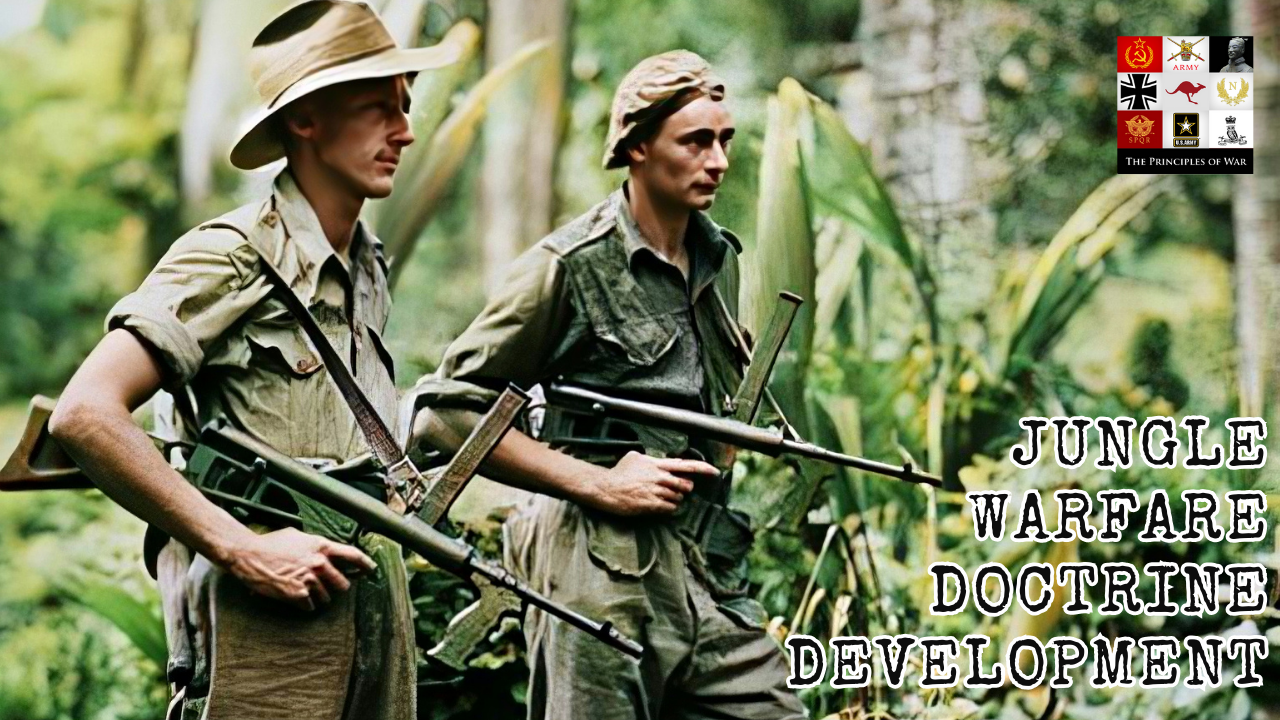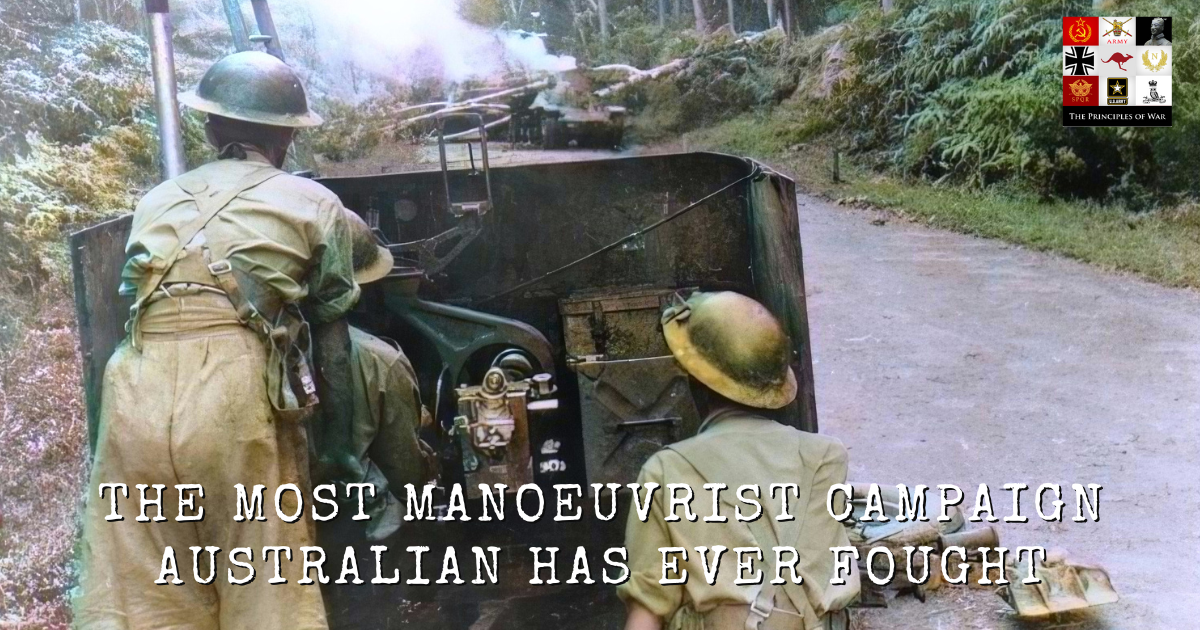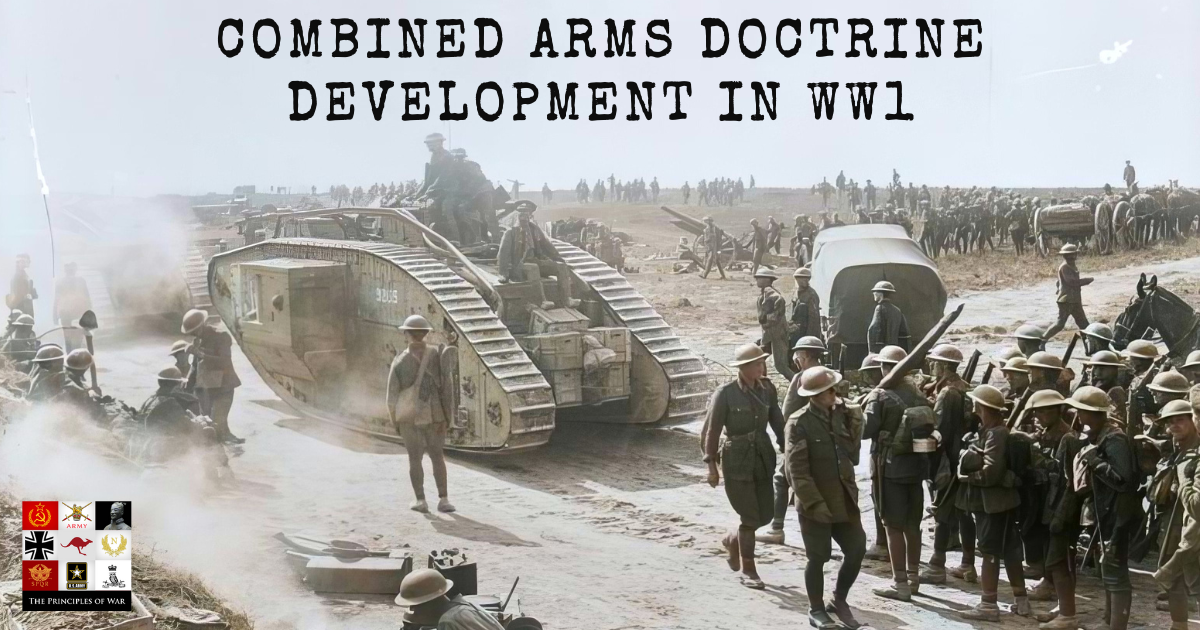Learning to Learn: The Evolution of Jungle Warfare Doctrine in the Australian Army During World War II
This episode looks at how jungle warfare doctrine developed and is part of our series on the Kokoda Campaign and Mobilisation. It is part of an interview with Dr Adrian Threlfall, an expert in Doctrine Development in the Second World War. He is the author of Jungle Warriors, an excellent book with a wide range of lessons on how the Army learnt to fight in the jungle.
Armies as Learning Organisations
Michael Howard wrote about Armies and how they learn – “This is an aspect of military science which needs to be studied above all others in the armed forces: the capacity to adapt oneself to the utterly unpredictable, the utterly unknown.” This is why we are interviewing Dr Threlfall – because he is an expert on how the Australian Army learned to learn about Jungle Warfare. These lessons are important because much of the terrain around Australia is still jungle, and also because the modern battlefield is very different to what we have previously fought on, and lessons will need to be learnt very quickly.
The story of the Australian Army’s adaptation to jungle warfare during World War II is one of learning how to fight in the jungle whilst in contact, a difficult and very expensive task. Faced with an entirely different environment from the deserts of North Africa and the Middle East, Australian troops had to quickly learn, adapt, and overcome the challenges presented by dense jungles, oppressive humidity, and an elusive enemy. This adaptation process was neither seamless nor straightforward, but it was crucial to the eventual success of Australian forces in the Pacific Theater.
The Challenges of Jungle Warfare
Jungle warfare presented a unique set of challenges that were vastly different from those encountered in other theaters of war. The dense canopy made visibility almost nonexistent, complicating command, control, and communications. In the open deserts of North Africa, commanders could rely on visual observation and radio communication to maintain control over their units. In the jungle, these tools were rendered almost useless. Thick foliage blocked all lines of sight, and the high humidity, coupled with the dense jungle, severely impaired the functionality of radios.
Junior commanders were often required to take on greater responsibility. The war in the jungle became, in many respects, a platoon or even section-level conflict. Commanders had to trust their subordinate leaders to make critical decisions in the heat of battle, often without direct oversight or the ability to communicate. This decentralized form of warfare was a significant departure from the more structured command and control systems that had been developed in other campaigns.
The experience of the Australian troops in Syria and Greece, where mountainous terrain presented its own communication challenges, provided some lessons, but these were insufficient for the jungles of New Guinea. In the mountains, radio sets worked when there was line of sight, but this was almost never the case in the jungle. Even in the mountains of Syria, communication was difficult, but in New Guinea, it became almost impossible. Commanders had to rely on signal cables, which were often cut by artillery, the enemy, or even local wildlife like baboons, adding more complexity to the environment.
The Transition from Desert to Jungle Warfighting and tactics
When the Australian 6th, 7th, and 9th Divisions returned from the Middle East to face the Japanese in the Pacific, they were battle-hardened but unprepared for the jungle environment. The rapid transition to jungle warfare required not only physical adaptation but also a complete overhaul of tactics, training, and mindset. The development of jungle warfare doctrine in the Australian Army during this period was driven by necessity and was characterized by both innovation and trial and error.
One of the most significant challenges was the need to adapt to the jungle environment itself. Many Australian troops had never set foot in a jungle before and had to learn quickly how to move, navigate, and survive in such an inhospitable terrain. The first Australians to face the Japanese in the jungle were the two brigades of the 8th Division, stationed in Malaya. However, their training had been largely based on the assumption that they would be fighting in the Middle East, and it was not fit for purpose in the jungle. They quickly realized the need for a different approach, one that would allow them to operate effectively in the dense, humid environment of Southeast Asia.
The 8th Division’s initial encounters with the Japanese in Malaya were marked by a series of tactical withdrawals and retreats, often precipitated by the Japanese ability to outflank and encircle Allied forces. The jungle offered the Japanese numerous advantages, including the ability to move unseen and strike from unexpected directions. This led to a sense of disorganization and panic among some Allied units, though the Australians were generally more resilient.
The experiences in Malaya and Singapore provided valuable lessons for the Australian Army. Reports from commanders emphasized the need for better jungle training, more appropriate equipment, and a greater reliance on decentralized command structures. These lessons were slowly assimilated and incorporated into a more cohesive jungle warfare doctrine.
The Importance of Innovation and Adaptation
The Australian Army’s ability to innovate and adapt was critical to its eventual success in jungle warfare. One of the key areas of innovation was in the development of specialized training programs. These programs focused on teaching troops how to navigate and fight in the jungle, with an emphasis on small-unit tactics, rapid decision-making, and the use of natural cover. Snap shooting drills, for example, were introduced to improve soldiers’ ability to engage the enemy at close range, a common occurrence in jungle combat.
Another important area of adaptation was the use of equipment. The standard issue .303 rifles, while effective in other theatres, were found to be cumbersome in the jungle. Troops called for shorter, more manoeuvrable firearms and a greater emphasis on automatic weapons, which were more suited to the close-quarters combat typical of jungle warfare. Similarly, the steel helmets issued to troops were found to be both uncomfortable in the heat and noisy when moving through the jungle, leading to calls for lighter, more practical headgear.
Communication also saw significant changes. With radios largely ineffective in the jungle, reliance on signal cables increased, despite the challenges they presented. Units began to scrounge for as much cable as possible, recognizing that reliable communication was essential, even if it meant laying miles of cable through dense jungle. This emphasis on communication, despite the difficulties, highlights the importance of adaptability in overcoming the unique challenges of jungle warfare.
When on the job training is not good enough.
The evolution of jungle warfare doctrine in the Australian Army during World War II idemonstrates the importance of learning and adaptation in military operations. Faced with an environment that was utterly different from anything they had previously encountered, Australian troops had to quickly learn to learn. They had to adapt their tactics, equipment, and mindset to the demands of jungle warfare, and in doing so, they developed a level of expertise that would serve them well throughout the Pacific campaign.
This process of adaptation was not without its challenges, and it was often marked by trial and error. However, the lessons learned during this period were invaluable, not only for the Australian Army but also for the broader understanding of how to conduct operations in challenging environments. As we look to the future, the ability to adapt to new and unpredictable challenges remains as critical as ever, and the experiences of the Australian Army in World War II provide a powerful reminder of the importance of learning to learn.








2 comments
Interested to download and watch . Purposely as educational for learning and teaching in rememberance of olden days.
[…] into training material for the Brigades. Our mini-series with Dr Adrian Threlfall looks at how Jungle Warfare doctrine was developed in the Australian Army and how the Jungle Warfare Training Centre at Canungra was […]